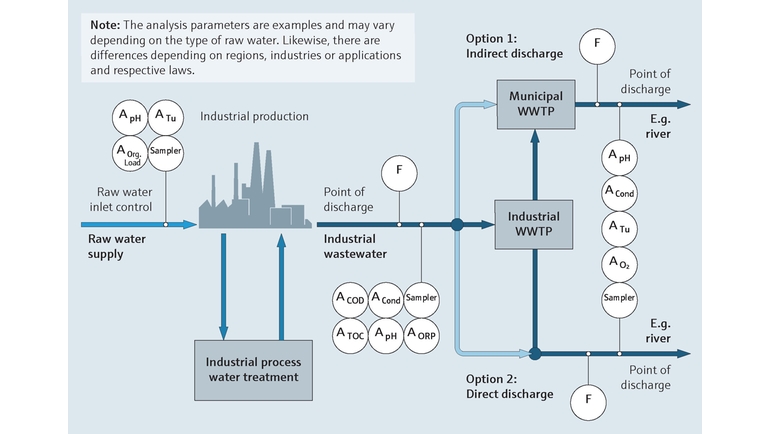Industrial Waste Water Treatment-- Advanced Solutions for Cleanser Effluents
Industrial Waste Water Treatment-- Advanced Solutions for Cleanser Effluents
Blog Article
Technologies and Developments in Industrial Waste Water Therapy Technologies
The landscape of commercial wastewater treatment is undergoing a transformative shift, driven by advancements that enhance both efficiency and sustainability. As governing requirements develop, the combination of AI and machine discovering into wastewater management systems assures to enhance procedures and guarantee conformity.
Summary of Drainage Treatment Technologies
Wastewater treatment innovations encompass a range of methods developed to remove contaminants from commercial effluents prior to their release into the setting. These technologies are crucial for keeping ecological equilibrium and making certain conformity with environmental guidelines. The main classifications of wastewater treatment consist of physical, chemical, and organic techniques, each offering distinct purposes based upon the nature of the pollutants present.

Organic treatment approaches use microbes to degrade raw material, making them specifically effective for organic-rich effluents. Techniques like activated sludge and biofilm reactors harness the all-natural degradation abilities of microorganisms, resulting in substantial decreases in biochemical oxygen need (BODY)
Advanced Filtering Methods
Advanced purification methods stand for an important evolution in the world of commercial wastewater treatment, improving the efficiency of pollutant elimination procedures. Industrial Waste Water Treatment. These techniques encompass a range of innovations, including microfiltration, ultrafiltration, nanofiltration, and turn around osmosis, which provide consecutive obstacles for numerous particle dimensions and chemical frameworks
Microfiltration and ultrafiltration utilize membrane layer systems to eliminate put on hold solids, microorganisms, and bigger natural particles, enhancing the top quality of effluent before further therapy. Nanofiltration connects the space between ultrafiltration and turn around osmosis, effectively eliminating organic compounds and divalent ions, hence lowering the lots on downstream processes.
Reverse osmosis provides the highest degree of purification by enabling just water and small particles to pass through its semi-permeable membrane layers, making it perfect for recovering top quality water from industrial effluents. Current developments in membrane modern technology, including the advancement of more fouling-resistant and sturdy products, have significantly improved operational effectiveness and minimized costs.
Incorporating these sophisticated filtration techniques not just improves the overall therapy process yet likewise contributes to sustainability efforts by making it possible for water reuse and source recovery in commercial settings. (Industrial Waste Water Treatment)
Biological Therapy Technologies

Furthermore, the advancement of engineered organic systems, such as membrane layer bioreactors (MBRs), incorporates organic treatment with advanced membrane layer filtration. This assimilation permits greater effluent quality and reduced impact, making it appropriate for space-constrained industrial centers. Developments in genetically engineered bacteria have actually also emerged, improving the biodegradation of specific impurities, such as drugs and heavy metals, that are typically challenging to eliminate.
Additionally, the execution of bioaugmentation methods, where beneficial microbes are introduced to enhance the existing biological therapy procedures, has revealed promising results in improving therapy performance. These developments jointly symbolize a pattern towards even more reliable and sustainable organic therapy approaches that can adapt to the progressing intricacies of commercial wastewater streams. As industries proceed to focus on ecological conformity, these biological innovations will certainly play a vital duty in wastewater monitoring.

Source Healing Approaches
In commercial settings, the combination of resource recovery methods has ended up being progressively crucial for enhancing sustainability useful link and decreasing waste. These methods concentrate on removing important materials and energy from wastewater streams, thus changing prospective contaminants into reusable resources.
One prominent technique is vitamins and mineral healing, where nitrogen and phosphorus, commonly present in excess in wastewater, are caught and transformed right into fertilizers. This not only lowers environmental influences yet also gives a round economic situation remedy for web agricultural applications. Additionally, innovations such as anaerobic food digestion enable for the conversion of natural waste into biogas, a renewable energy resource that can counter fossil fuel use in commercial procedures.
In addition, advanced filtration and membrane modern technologies facilitate the healing of industrial spin-offs such as steels and salts. These recovered products can be reintegrated right into production procedures, decreasing the demand for virgin resources.
Future Trends in Drainage Monitoring
As markets significantly focus on sustainability, the future of wastewater management is set to undergo significant transformations. Technical improvements, such as expert system and machine learning, will enable more efficient tracking and management of wastewater systems. These technologies can anticipate upkeep needs, optimize treatment processes, and enhance decision-making, eventually decreasing functional prices and environmental impact.
Furthermore, the integration of circular economic climate concepts will play a vital function in wastewater administration. Industries are expected to shift towards systems that not just treat wastewater however also recoup useful sources, such as nutrients, water, and power. This change will decrease waste and advertise the reuse of products, lining up with international sustainability goals.
Emerging treatment techniques, such as membrane layer bioreactors and progressed oxidation procedures, will certainly better improve the effectiveness of wastewater therapy, permitting for greater quality effluents appropriate for reuse. Furthermore, regulatory frameworks are likely to develop, highlighting stricter criteria for wastewater discharge and encouraging markets to embrace ingenious treatment solutions.
Verdict
In verdict, the advancement of commercial wastewater treatment innovations demonstrates a substantial shift in the direction of improved performance and sustainability (Industrial Waste Water Treatment). Developments in sophisticated filtration strategies, biological therapies, and source healing techniques highlight the sector's commitment to environmental stewardship.
The landscape of commercial wastewater therapy is undergoing browse this site a transformative change, driven by advancements that boost both performance and sustainability.Wastewater therapy innovations incorporate a variety of techniques developed to get rid of contaminants from industrial effluents before their launch into the atmosphere.Harnessing the power of organic processes has led to significant advancements in the therapy of commercial wastewater.Additionally, the application of bioaugmentation strategies, where useful germs are introduced to boost the existing biological treatment procedures, has shown encouraging results in boosting treatment efficiency. These advancements collectively indicate a trend towards even more sustainable and reliable organic treatment approaches that can adjust to the advancing intricacies of industrial wastewater streams.
Report this page